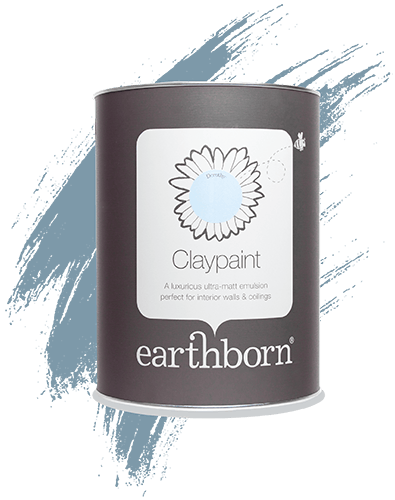Have you ever experienced nausea and dizziness when painting? The chemicals that cause those don’t have a great long-term effect either. Conventional paints are made up of formaldehyde, heavy metals and VOCs (volatile organic compounds).
Apart from having a detrimental effect on your health, these paints are also extremely bad for the environment. Not only does the production process use non-sustainable resources, but it also produces an immense amount of toxic waste.
What is eco-friendly paint?
Fortunately, eco-friendly paint options are becoming more common. These paints are made from natural ingredients including clay, milk proteins, citrus, balsam and other minerals, and much lower levels of VOCs.
An example of eco-friendly paint is milk paint, which has in fact been used for hundreds of years. This is made from the milk protein casein mixed with lime, and has a powdered formula. When the powder is mixed with water, it doesn’t emit any odour and is safe if inhaled.
When shopping for eco-friendly paints, it can get a little confusing trying to find the ones that are actually environmentally friendly, or just labelled suggesting better environmentally friendly credentials than existing paints but not by much.
Here are a few things to keep an eye out for when choosing eco-friendly paints:
- make sure it’s described as low or no VOC
- has the certified organic logo
- has been certified by GREENGUARD Environmental Institute
- check the label for toxic ingredients like titanium dioxide and petroleum
Why use eco-friendly paints?
- To save the environment – eco-friendly paints use renewable and sustainable resources to create the paint. They produce less less toxic waste and no hazardous emissions during production.
- To protect you own health and wellbeing – the solvents in regular paints let off poisonous gasses, and if you’re breathing this in every day (say as a painter) it can be harmful in the long run.
- To protect your walls – eco-friendly paints have high breathability, which means they allow water vapour to pass through their porous coatings. This results in less mould, damp and condensation building up on your walls.
Cost
Unsurprisingly, eco-friendly paints are generally more expensive than conventional paints. Basic paints cost around £8 – £38 per 2.5 litre tub. Eco-friendly paints however, can cost approximately £35 – £40 for a 2.5 litre tub, depending on the colour and brand.
OPOH recommends
Earthborn Paints were founded in 2002. They are the first UK brand to be awarded the EU Ecolabel for Indoor Paints and Varnishes.

Their paints are produced from clay, which has the added bonus of reducing condensation, mould and mildew. Earthborn Paints offer a wide range of colours for all purposes – interiors, exteriors, wood and furniture.
In addition to paints, they also produce decorating products including furniture wax and glaze, primers and wallpaper pastes. All their products carry a declaration of ingredients, so you can rest assured knowing exactly what you’re using.

